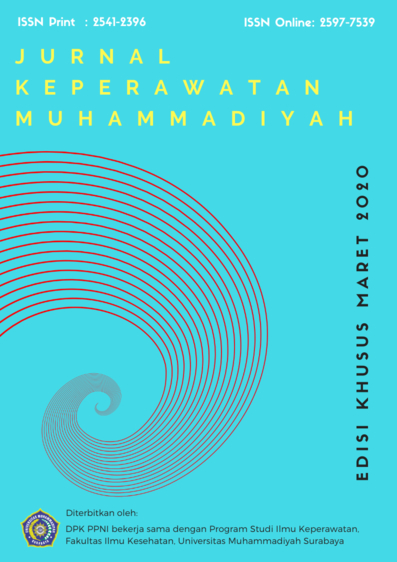Kandungan Bee Bread: Hasil Uji Fitokimia Dan Ftir Pada Bee Bread Sebagai Preliminary Data Suplemen Wanita Prakonsepsi
DOI:
https://doi.org/10.30651/jkm.v5i2.4075Keywords:
Bee bread, Flavonoid, Polyphenol, FTIR (Foourier Transform Infrared), FitokimiaAbstract
Objective: This study aims to determine the content of flavonoids and polyphenols found in bee bread. This research is a laboratory research. The sample used in the study was bee bread. Examination used in the form of FTIR test (Fourier Transform Infrared) using FTIR spectrophotometer, Phytochemical Test to see the content of saponins, tannins, flavonoids, alkaloids, terpenoids and steroids using a chemical solution to see the content of bee bread and Polyphenol Test using 20D + Electronics to see the amount of polyphenols on bee bread. This research was conducted at the Integrated Laboratory of the Faculty of Mathematics and Natural Sciences, Hasanuddin University and the Biochemistry Laboratory of the Faculty of Mathematics and Natural Sciences, Hasanuddin University
Results: Phytochemical tests using Pb (CH3COO) 2 and FeCl3 reagent solutions were found to contain flavonoids and tannins. While the FTIR test results indicate the existence of a phenolic framework which belongs to the flavonoid group.
Conclusion: This study concludes that bee bread contains flavonoids and polyphenols which have antioxidant effects, so it is good to be used in supplements to deal with stress in women.
References
Ahmed, S., Sulaiman, S. A., Baig, A. A., Ibrahim, M., Liaqat, S., Fatima, S., … Othman, N. H. (2018). Honey as a Potential Natural Antioxidant Medicine: An Insight into Its Molecular Mechanisms of Action. Oxidative Medicine and Cellular Longevity, 2018. https://doi.org/10.1155/2018/8367846
Azman, K. F., Zakaria, R., Abdul Aziz, C. B., & Othman, Z. (2016). Tualang Honey Attenuates Noise Stress-Induced Memory Deficits in Aged Rats. Oxidative Medicine and Cellular Longevity, 2016. https://doi.org/10.1155/2016/1549158
Bakour, M., Fernandes, Â., Barros, L., Sokovic, M., Ferreira, I. C. F. R., & Badiaa lyoussi. (2019). Bee bread as a functional product: Chemical composition and bioactive properties. Lwt-Food Science and Technology, 109, 276–282. https://doi.org/10.1016/j.lwt.2019.02.008
Barene, I., Daberte, I., & Siksna, S. (2015). INVESTIGATION OF BEE BREAD AND DEVELOPMENT OF ITS DOSAGE FORMS. Medicinos, 21(1), 16–22. https://doi.org/10.15591/mtp.2015.003
Chen, C. K., Ping, F. W. C., Ooi, F. K., & Mohamed, M. (2018). Effects of bee bread supplementation during recovery on time trial performance and selected physiological parameters. International Journal of Pharma and Bio Sciences, 9(2). https://doi.org/10.22376/ijpbs.2018.9.2.b281-288
Doganyigit, Z., Yakan, B., & Kaymak, E. (2018). The Effects of Feeding Obese Rats by Bee Bread on IL-6 Expression in Rat Stomach. Proceedings, 2(25), 1570. https://doi.org/10.3390/proceedings2251570
Erejuwa, O. O., Sulaiman, S. A., Wahab, M. S. A., Sirajudeen, K. N. S., Salleh, M. S. M., & Gurtu, S. (2011). Differential responses to blood pressure and oxidative stress in streptozotocin-induced diabetic wistar-kyoto rats and spontaneously hypertensive rats: Effects of antioxidant (Honey) treatment. International Journal of Molecular Sciences, 12(3), 1888–1907. https://doi.org/10.3390/ijms12031888
Fadaki, F., Modaresi, M., & Sajjadian, I. (2017). The effects of ginger extract and diazepam on anxiety reduction in animal model. Indian Journal of Pharmaceutical Education and Research, 51(3), S159–S162. https://doi.org/10.5530/ijper.51.3s.4
Gul, R., Jan, S. U., Faridullah, S., Sherani, S., & Jahan, N. (2017). Preliminary Phytochemical Screening, Quantitative Analysis of Alkaloids, and Antioxidant Activity of Crude Plant Extracts from Ephedra intermedia Indigenous to Balochistan. Scientific World Journal, 2017(Figure 1). https://doi.org/10.1155/2017/5873648
Gupta, M., Thakur, S., Sharma, A., & Gupta, S. (2013). Qualitative and Quantitative Analysis of Phytochemicals and Pharmacological Value of Some Dye Yielding Medicinal Plants. ORIENTAL JOURNAL OF CHEMISTRY, 29(2), 475–481.
Habryka, C., Kruczek, M., & Drygas, B. (2016). Bee products used in apitherapy. World Scientific News, 48(June), 254–258.
IvaniÅ¡ová, E., KaÄániová, M., FranÄáková, H., Petrová, J., Hutková, J., Brovarskyi, V., … Musilová, J. (2015). Bee bread - Perspective source of bioactive compounds for future BEE BREAD – PERSPECTIVE SOURCE OF BIOACTIVE COMPOUNDS FOR FUTURE. (January 2016). https://doi.org/10.5219/558
Kieliszek, M., Piwowarek, K., Kot, A. M., Błażejak, S., Chlebowska-Śmigiel, A., & Wolska, I. (2018). Pollen and bee bread as new health-oriented products: A review. Trends in Food Science and Technology, 71, 170–180. https://doi.org/10.1016/j.tifs.2017.10.021
Mamta, S., & Jyoti, S. (2012). PHYTOCHEMICAL SCREENING OF ACORUS CALAMUS AND LANTANA CAMARA. International Research Journal Of Pharmacy, 3(5).
Markiewicz-Zukowska, R., Naliwajko, S. K., Bartosiuk, E., Moskwa, J., Isidorov, V., Soroczyńska, J., & Borawska, M. H. (2013). Chemical composition and antioxidant activity of beebread, and its influence on the glioblastoma cell line (U87MG). Journal of Apicultural Science, 57(2), 147–157. https://doi.org/10.2478/jas-2013-0025
Mumford, S. L., Browne, R. W., Schliep, K. C., Schmelzer, J., Plowden, T. C., Michels, K. A., … Schisterman, E. F. (2016). Serum Antioxidants Are Associated with Serum Reproductive Hormones and Ovulation among Healthy Women. The Journal of Nutrition, 146(1), 98–106. https://doi.org/10.3945/jn.115.217620
Petelin, A., Kenig, S., KopinÄ, R., Deželak, M., ÄŒerneliÄ Bizjak, M., & Jenko Pražnikar, Z. (2019). Effects of royal jelly administration on lipid profile, satiety, inflammation, and antioxidant capacity in asymptomatic overweight adults. Evidence-Based Complementary and Alternative Medicine, 2019. https://doi.org/10.1155/2019/4969720
Tungmunnithum, D., Thongboonyou, A., Pholboon, A., & Yangsabai, A. (2018). Flavonoids and Other Phenolic Compounds from Medicinal Plants for Pharmaceutical and Medical Aspects: An Overview. Medicines, 5(3), 93. https://doi.org/10.3390/medicines5030093
Urcan, A., Marghitas, L. A., Dezmirean, D. S., Bobis, O., Bonta, V., Muresan, C. I., & Margaoan, R. (2017). Chemical Composition and Biological Activities of Beebread – Review. Bulletin UASVM Animal Science and Biotechnologies, 74(1), 6–14. https://doi.org/10.15835/buasvmcn-asb: 12646
Downloads
Published
Issue
Section
License
- Penulis tetap memegang hak atas karyanya dan memberikan hak publikasi pertama kepada jurnal ini yang secara simultan karya tersebut dilisensikan di bawah:Â Creative Commons Attribution-ShareAlike 4.0 International (CC BY-SA 4.0)













